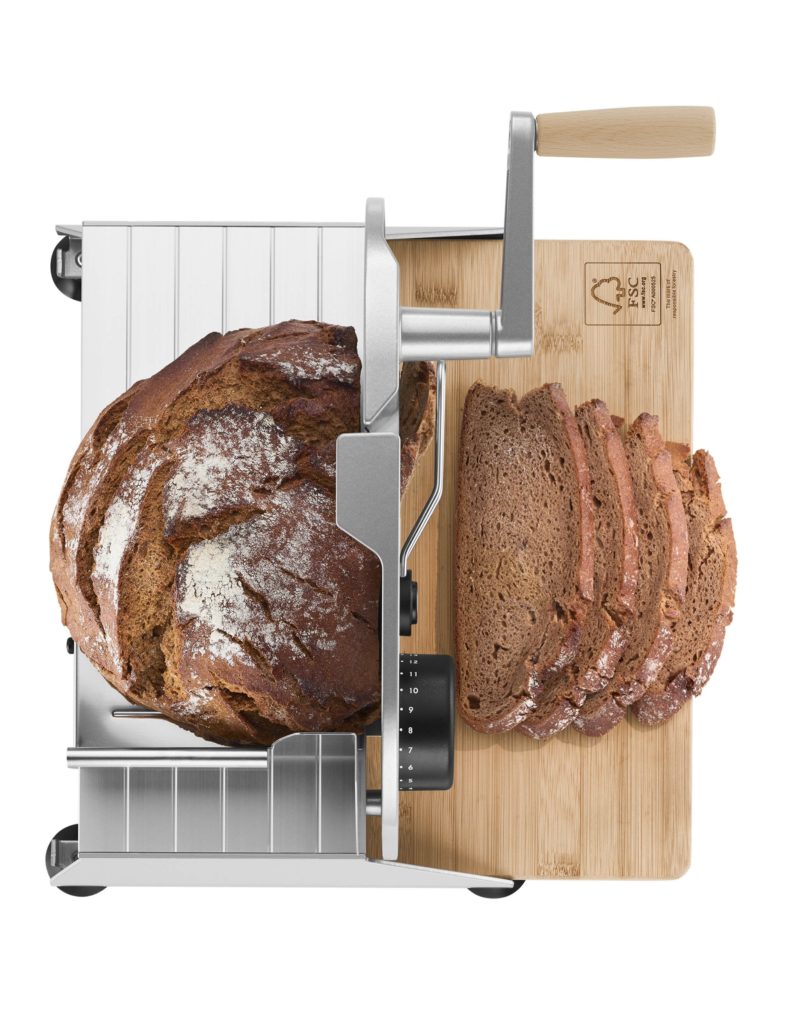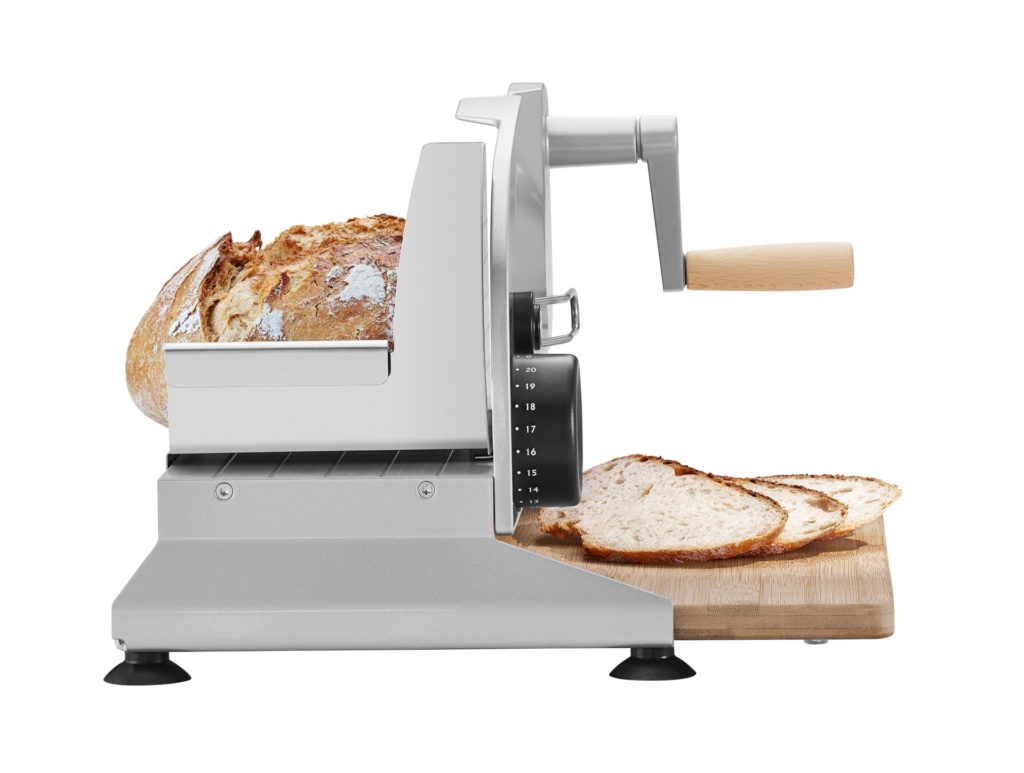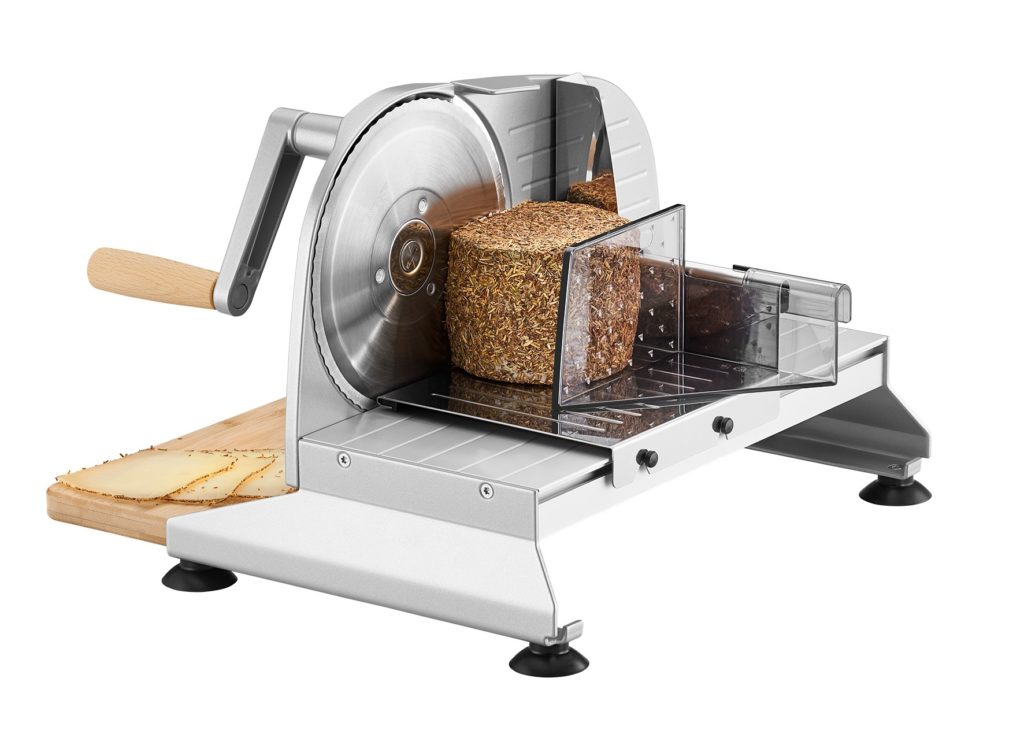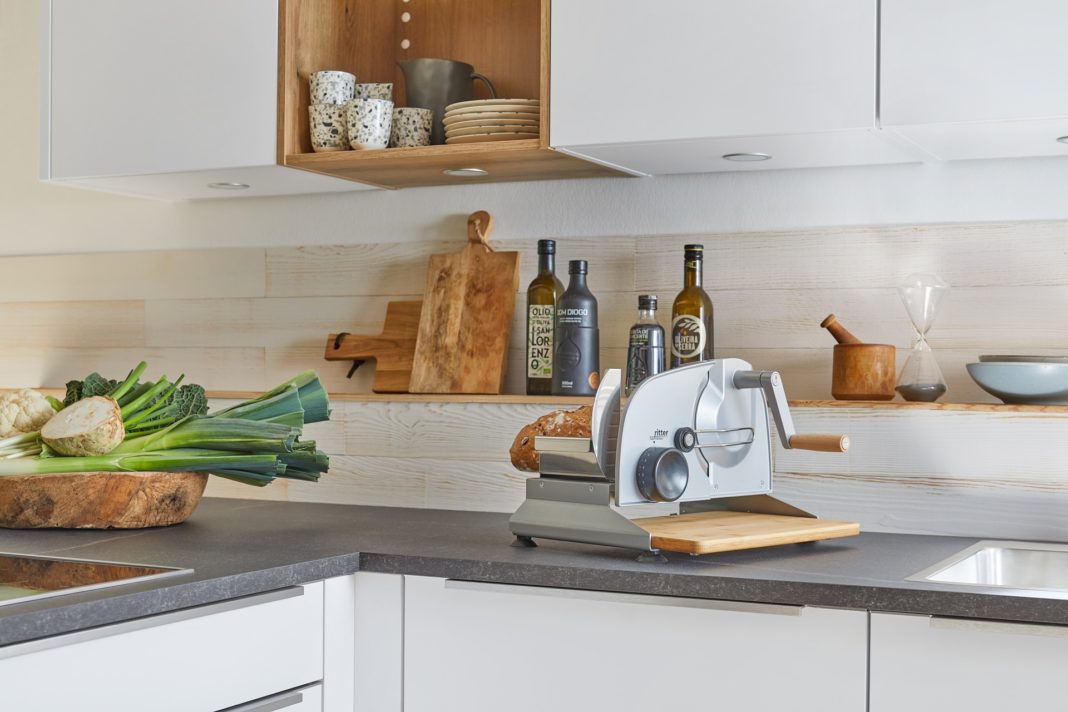Berlin, Germany (Gastronomy). Germans may know and be able to name one or the other knight as well as one or the other work, but ritterwerk (own spelling), who or what is that?
Connoisseurs of classic kitchens and heroes at home know that the knife cleaning machines developed by Franz Ritter were the non plus ultra at a time when knives made of stainless steel were still scarce. The gents of „ritterwerk GmbH“ based in Gröbenzell are proud to announce that „until the introduction of stainless steel over 1,000,000 units had been sold“. Congratulations to the manufacturers and dealers, but also to those at the stove who could put these machines to good use.

„Almost 30 years“ after the knife cleaning machine era, „the foundation stone for today’s success story of ritterwerk … with the first bread slicers“ is said to have been laid. We were sampled with one of these. It’s ready and we coolly cut one slice after the other and always a good one in the editorial office, which is warm even in winter. With the „amano 5“ food slicer. Cut? crank!
The „amano 5“ food slicer is really retro, both in terms of function and shape. But first things first. Instead of cables and salad, the handle goes to the crank, to the „hand crank with a particularly high-quality handle made of beech wood“, which – no question – is loose and easy to use, almost too loose and light, so that you cast an incredulous eye on the goods, which are to be cut. „Yes, there is something on it,“ I see and turn the nevertheless stable crank and hit the rising prices for electricity and dream of one or the other in politics and the press, which I would like to put on this beautiful slicing sled made of stainless steel . Always a good round, always a good disc!

That’s all well and good, which brings us to design, which is known to determine consciousness. It is obvious that the „amano 5“ from ritterwerk offers a „self-supporting design“. The manual food slicer stands on four paws, called „feet“, which are not only made of high-quality steel, but also have black shoes made of plastic and elastic – no, the „suction feet“ are made of silicone – that are screwed on.
What is great is that when cutting, nothing slips like tobogganers on runners. Each disc slides perfectly onto the (roller) board thanks to a “cutting material guide bracket”. Yep, the board is also made of bamboo. It lies on a rail under the food slicer and can be pulled out and pushed in effortlessly and serves as a great serving platter with the food to be sliced. If you don’t want this nice addition, you can reach for an alternative: the „manus 3“ food slicer. It should also be mentioned that the hand crank handle on this device is made of plastic.

However, with both the „manus 3“ and the „amano 5“, the thickness of the things to cut can be adjusted „continuously up to approx. 20 mm“. And that’s good!
The manual food slicer „manus 3“ currently costs 149.99 euros in the „ritterwerk“ store and the „amano 5“ 199.99 euros.
It must be mentioned that the devices described are firstly manufactured in Germany and secondly that accessories can be ordered as spare parts if the worst comes to the worst. If the e-waste from Far East Asia has quirks, it is usually thrown away.
Anmerkung:
Ole Bolle’s report was translated into English by Christoph Merten. The research was supported by ritterwerkt GmbH.











